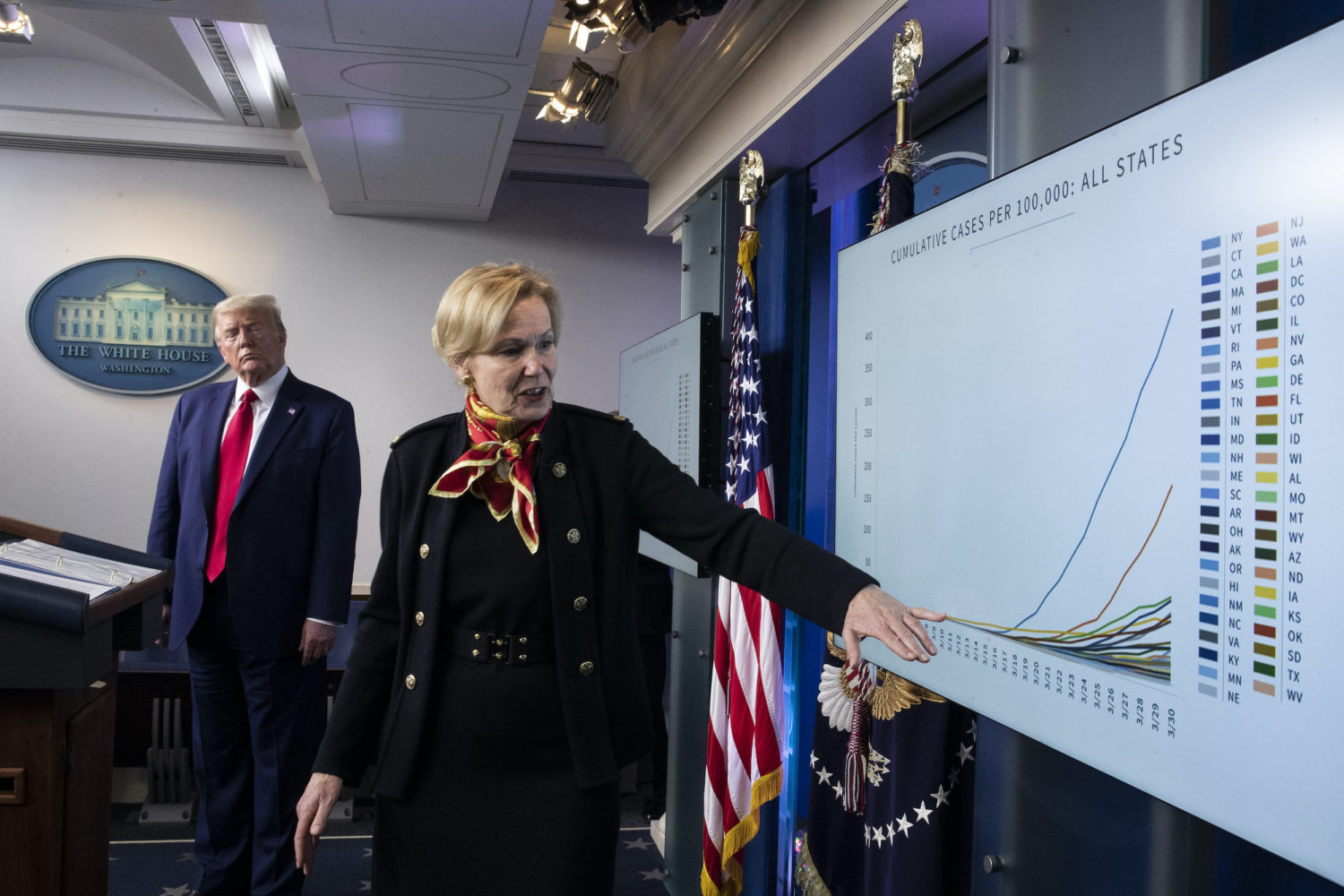This is part of a series of essays during the COVID-19 pandemic designed to help journalists and all public writers achieve what I have been calling “civic clarity.” That quality in prose comes from writers determined to take responsibility for what readers understand.
Just because a piece of writing goes down like sweet iced tea on a hot summer day, does not mean it’s easy to brew. To change the metaphor, clear writing comes from a workbench equipped with a variety of tools. Among them are strategies for thinking, reporting, interviewing, focusing, drafting, revising and audience engagement.
To learn these tools, we need “mentor texts” that put them into practice. I recently found such a text in a statement on medical masks that came in a press conference from the surgeon general of the United States.
I am sharing with you another, an op-ed piece by Cass Sunstein writing for Bloomberg News. It is not often that I find myself invigorated by a 500-word newspaper column, a level of engagement that leads me to a process I call X-ray reading. I give in to the powerful desire to unveil the text to discover how the writer is working the magic.
My conclusion is that Sunstein has given me a new way of understanding public numbers. It has a name I can easily remember: “anchoring.”
Before I analyze this column, I want to offer another example of “secret knowledge” that can be manipulated by those in power. I learned this particular lesson the day I sent a group of college journalists to interview a U.S. Secretary of Education. (I’ve forgotten his name.)
One student asked him why the administration had decided to cut the education budget. The Secretary argued that this was not true, that, even in a tough economy, the budget has been raised by a modest 1%. The student wrote that figure down and placed it with a quote in the story. When I read it, I scratched my head and consulted an economics professor from a local college. “Have him figure out the rate of inflation,” he said. In an era of higher inflation, say 3%, the buying power of the new budget had, in fact, declined.
That simple question — what is the rate of inflation? — may feel like Economics 101 for English majors. But it gave the entire class and its teacher a new way of understanding numbers, and a new way not to be fooled.
That brings us to Cass Sunstein’s essay, a slightly abridged version of which appeared in my hometown newspaper, the Tampa Bay Times, with the headline: “Weighing Trump’s ‘anchors’.” Good headline, I think. Anchors aweigh! My comments are in italics.
[the_ad id=”667826″]
Original title: What Is a ‘Very Good Job’ on Coronavirus Deaths?
By Cass Sunstein, Bloomberg News
How many Americans are going to die from the coronavirus? How will we know if the national government or the states have done a commendable job or a terrible one?
There’s an archaic taboo against beginning a report or column with a question. Phooey. A question has two benefits: It creates the good illusion of a conversation. And it offers a promise that if you stick with the writer, the questions will be answered or clarified.
Here’s a comment from President Donald Trump in late March:
“So you’re talking about 2.2 million deaths, 2.2 million people from this. And so if we could hold that down, as we’re saying, to 100,000. It’s a horrible number, maybe even less — but to 100,000. So we have between 100 and 200,000, and we altogether have done a very good job.”
I don’t think it is unfair to refer to that paragraph as a quick case study, an example we are going to learn from. There are six numbers in that short paragraph, which is usually a lot to digest. But even though the president is speaking rather than reading from a text with the clearest syntax, he manages to get his point across. So what’s the problem?
Do you see what Trump did there?
This is my favorite sentence in the column. It comprises seven one-syllable words. It uses the second person plural “you” in a question that really feels like we are engaged in some kind of back and forth. No, is my answer, I did not see what Trump was doing. But please, if there is some secret business going on here, I need to be in on it.
It’s called “anchoring,” and it’s one of the most important findings in behavioral science. People who have been involved in real estate, like Trump, are often experts in the use of anchors. Trump specified an anchor (2.2 million deaths), and he used it to support his claim that if 100,000 to 200,000 Americans end up dying, he has “done a very good job.”
This feels effective to me for two reasons. First, he introduces us to a new term, a bit of jargon — but also a metaphor — to let us in to the secret club with the secret passwords.
Second, the writer doesn’t squeeze everything about anchors into this space. He is controlling the pace of information, introducing a new concept. It does not feel like I am being lectured to here, even with the phrase “behavioral science.” It feels more like sitting across from a smart friend at a coffee shop who is sketching out something I need to know on a paper napkin.
Whenever the goal is to affect people’s evaluations, it’s smart to get a particular number in their heads, whether it involves pricing property or estimating deaths. That number often sticks. It influences their judgments about what’s likely or what’s fair, and about what counts as a successful outcome or instead a disaster.
Having led us to the edge of the shore, the writer guides us into the water, but only up to our knees. The language in this paragraph is fairly neutral, almost as if the writer is a helpful coach about to teach us how to swim.
The two clauses that stand out are “it’s smart to get a particular number in their heads; and another short sentence, “That number often sticks.” Clever writers often save their best thought for their shortest sentence. Short sentences ring true.
[the_ad id=”667872″]
Here’s an example from law. Suppose you are a lawyer, and some defective product (say, an exercise machine) malfunctioned and seriously hurt your client. Suppose that you’re suing the manufacturer not only for medical bills, but also for “pain and suffering.”
To capture that harm, it’s tough for a jury (or, for that matter, a judge) to come up with a specific monetary figure. But if you can get a large number in their minds — say $900 million in annual sales, or $300 million in annual profits — you can influence judgments in your client’s favor. Jurors might even think: “They can earn $300 million a year. Let’s give just 1% of that: $3 million!” In a catchphrase, “The more you ask for, the more you get.” That’s a tribute to the power of anchoring.
I don’t have a particular name for this move so I will give you three: a side-trip, a turn down a side street, a subplot.
It is healthy for the writer to present evidence that sounds more neutral than a standard critique of the president. The move from politics and medicine to the law expands the evidence and demonstrates the broader utility of understanding the anchor. It’s dangerous to clutter numbers, but these come in a mini-narrative that is somewhat familiar, even if distorted by television dramas.
“That’s a tribute to the power of anchoring” is another important short sentence, and the writer places it strategically at the end of the paragraph to intensify the emphasis.
Which brings us back to COVID-19. To say the least, it’s not simple to know whether a specific number of deaths is a success or a failure.
I find this structure appealing: Begin with COVID-19, transition to the law, return to the disease. This feeling that the parts fit together is called “coherence.” Signpost from the writer – “Which brings us back” – help the reader stay on the path. I admire the humility of “it’s not simple to know.”
If the anchor is 2.2 million deaths from the coronavirus — if that’s what could have happened — then 200,000 might look like a spectacular achievement. After all, two million deaths have been prevented.
If the anchor is 56,000 — the approximate number of Americans who die from the flu each year — then that same 200,000 figure looks really bad.
And if the anchor is lower than 56,000 — perhaps the number if the U.S. government had responded promptly and aggressively — then 100,000 deaths is a catastrophic failure.
Note the parallel structure of these three paragraphs. Each is organized around an “if … then” pattern. If this were the anchor, then this would be the effect. That structure might not even be noticed by the reader (I did not notice it in my first reading). It still works to lead the audience in a step by step process of understanding the numbers.
Three is the largest number in writing. When a writer uses three examples, that writer is sending the message “this is all you need to know.”
The lesson is simple. Don’t be fooled by anchors.
I don’t think the lesson is that simple. But the idea does not offend me. It is a word of encouragement to citizens reading the essay: “If you have read this far, I hope that you have learned the moral of the story: “Don’t be fooled by anchors.” These two consecutive short sentences slow the reader down in a good way.
To evaluate Trump’s performance, and that of the U.S. government, we have to ask what, exactly, was done, and what might have been done differently. And if we do that, it’s a pretty good bet that if the United States ends up with over 100,000 deaths, national officials did not do a “very good job.”
It makes sense that the writer would take the argument full circle. He begins with the virus, number of deaths, and the president. And he ends that way, with a conclusion appropriate to the evidence. Others may disagree.
[the_ad id=”667878″]
I conclude with the list of tools Cass Sunstein used to teach us the potentially exploitive strategy of anchoring. A good teacher takes responsibility for what the student understands. To achieve civic clarity, the writer:
- Used short sentences for emphasis
- Used word order for emphasis
- Began with a question to propel the issue
- Introduced us to a new concept to help us see numbers in a new way
- Translated jargon or technical language
- Used parallel structures to create an easy pattern for evaluating numbers
- Used a “case study” to test his ideas
- Chose three examples as a sign of completeness
- Used the word “you” to create the feel of interaction with audience
- Presented evidence of anchoring from more than one field of endeavor
- Established an accessible pace of information, created by a variety of shorter sentences
Roy Peter Clark teaches writing at Poynter. He can be reached via email at roypc@poynter.org or on Twitter at @RoyPeterClark.







